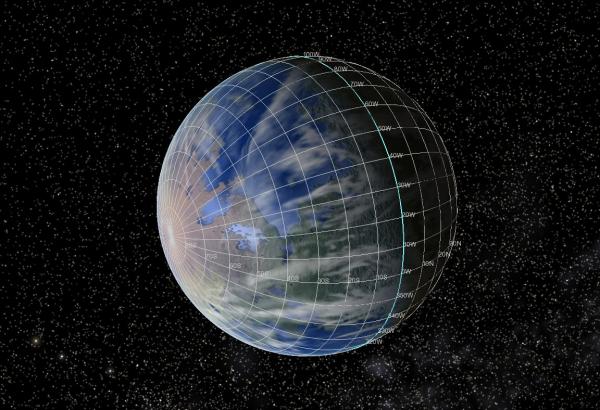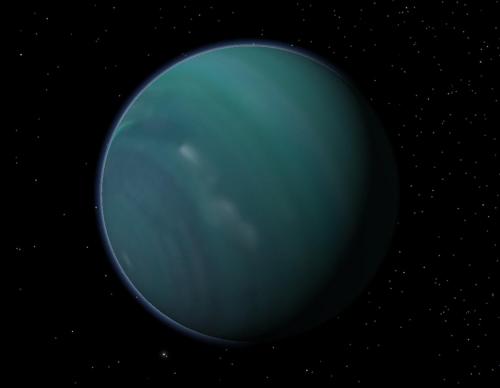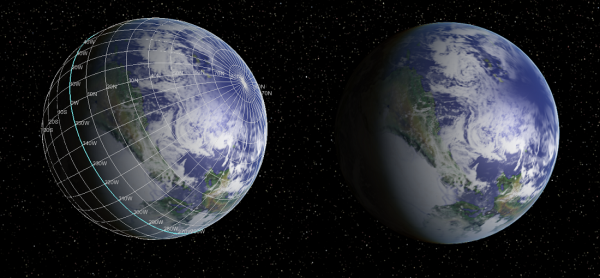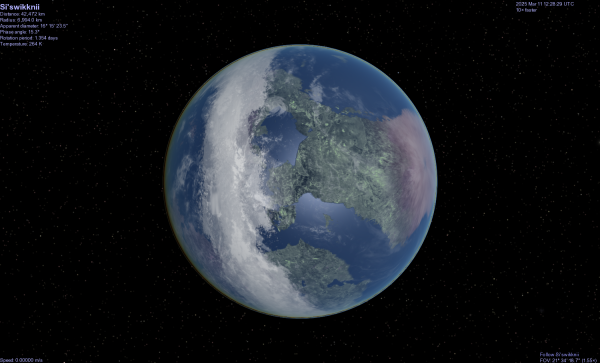BY LETTER
Skolian Type Worlds
Worlds with a large axial tilt | |
 Image from Steve Bowers | |
| Silenus, a terraformed Skolian world | |
Worlds with large axial tilts (greater than 45 degrees) are classed as Skolian type worlds, from the ancient Greek word Skolios, 'crooked'. This classification is supplementary to other NOLWOCs classification terms, so a skolian world may be an Earthlike (gaian) world, a gas giant (jovian) a planetoid and so on.
These worlds have very marked seasonal variations in temperature, and where an atmosphere is present, the weather patterns will vary greatly between seasons. In summer the substellar pole will be much hotter than the other pole, and the atmosphere will transport heat between the hot hemisphere and the cold one, causing strong winds.
Irene | |
 Image from Steve Bowers | |
| Irene, a cryojovian with a considerable axial tilt, located in the Oia system | |
Ice Belt Worlds
Gaian worlds with a large axial tilt may develop a cool or cold equatorial zone, since the equator receives less light on average than any other part of the planet.Whirlygig | |
 Image from Steve Bowers | |
| The coolest part of the planet Whirlygig is the equator, where permanent ice floes form in enclosed seas | |
The world Whirlygig, orbiting the star Freckles at the edge of the Inner Sphere, has been terraformed but retains an ice belt trapped between the equatorial continents. The ice belt on this world could be ameliorated or removed completely using climate engineering, for instance by using weather machine bubbles or orbiting mirrors; but the inhabitants of this world prefer to keep the ice belt due to its unusual nature.
Wiis'ssnii | |
 Image from Steve Bowers | |
| This life-bearing world has a central ice belt, and two distinct biological assemblages which are separated by the impassable glacial zone | |
Wiis'ssnii, in the Si'swikknii system, has a very high obliquity, and a permanent ice belt which developed early in the planet's history. This barrier has inhibited transfer of species from one hemisphere to the other almost completely, and the two assemblages of lifeforms have very little in common (apart from a common ancestry in the distant past).
Related Articles
Appears in Topics
Development Notes
Text by Steve Bowers
Initially published on 29 September 2009.
Initially published on 29 September 2009.






